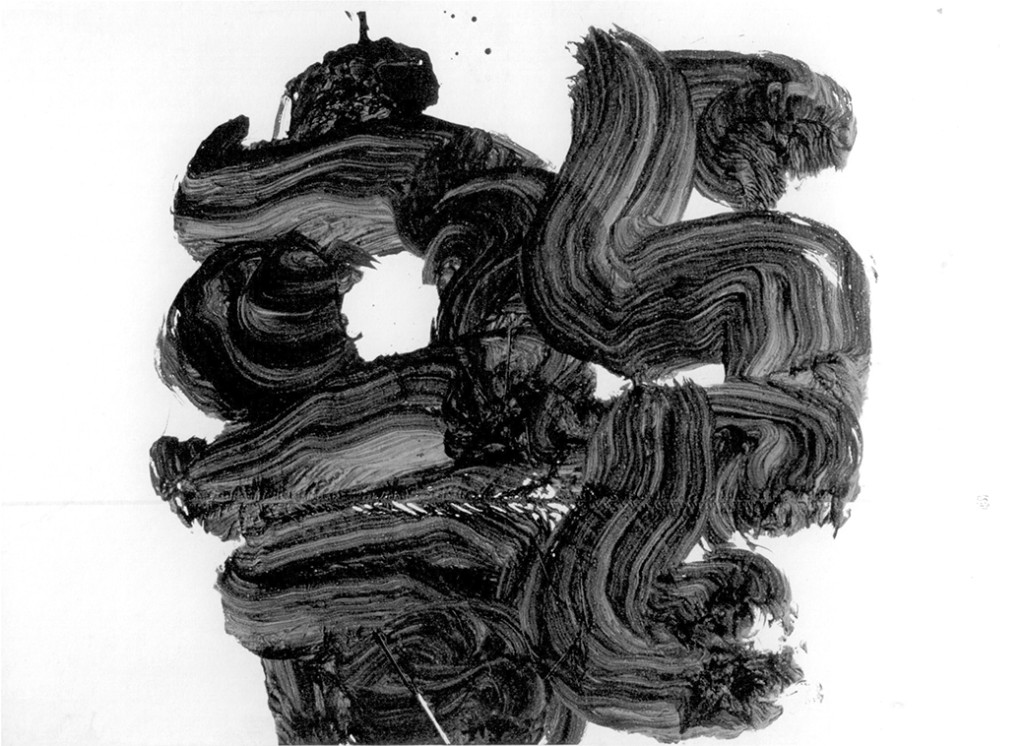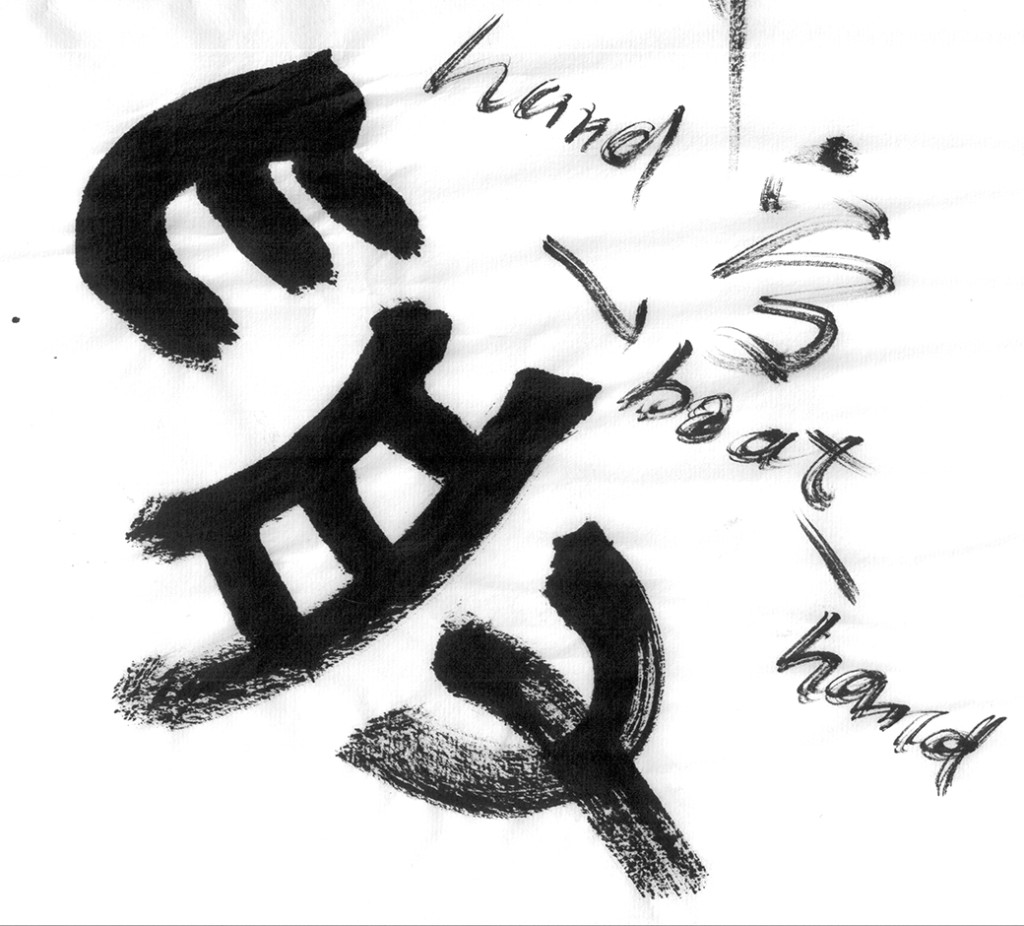Shortly after my arrival in Hong Kong in the year 2010, I visited the Hong Kong Art Fair. As the name indicates, it is a commercial event, a trade fair, selling and buying art. Towards the end of walking aisle after aisle through the fair, I found myself in front of a large-sized calligraphy by the internationally acknowledged Japanese calligrapher Inoue Yuichi. My heartbeat changed, rising, and on that very same day, I decided to take calligraphy lessons.
It took me a while to find a calligraphy teacher in Hong Kong who was willing to take a non-Chinese student. When I finally had my first lesson, I expected to start out with the style known as ‘regular style’ – Kaishu (or Kaisho in Japanese). For sure, the style is not as expressive as Inoue’s, and for the ordinary person, his work is not reachable, even after decades of training, or a lifespan. Yet, during my childhood as a Japanese school student. I did learn the basics of the elegant Kaishu style.
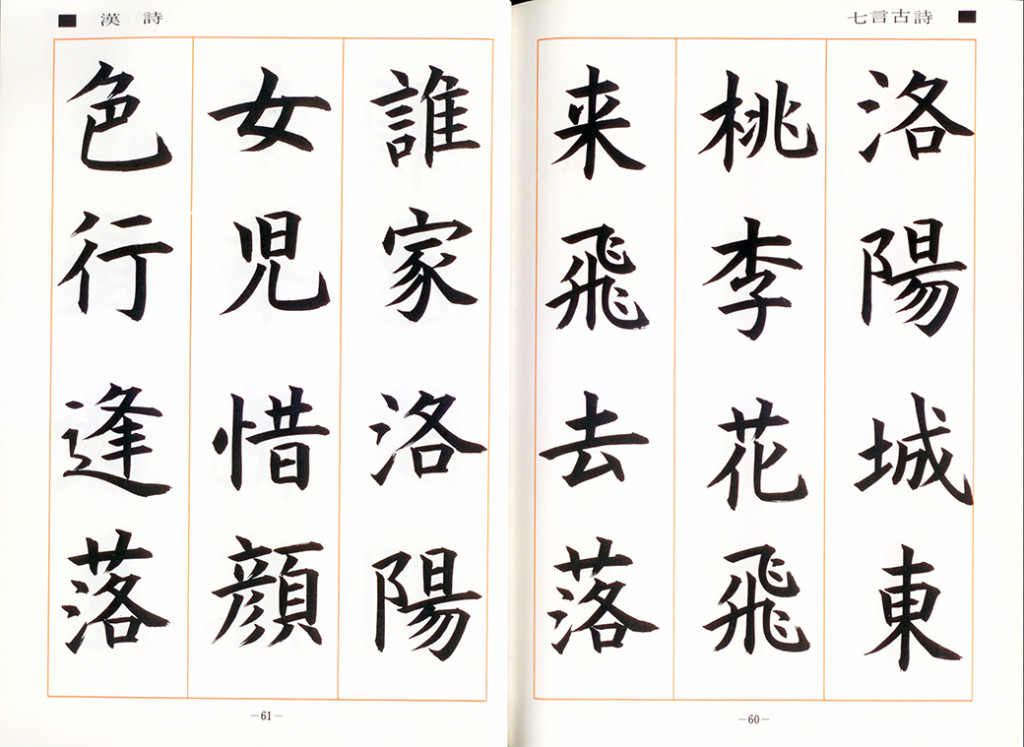
Double page spread from a Japanese calligraphy instruction book for Kaisho style. Takagi Koson: Calligraphy class. [高木香邨: 書道教室.]. Nittou Shoin, Tokyo 1975. P. 60-61.
However, Ms. Fung, my first Hong Kong calligraphy teacher started with the Oracle script style. At first, I was shocked. In my lectures, at conferences, and in my papers, I have been an opponent of the stereotypical interpretation of Chinese characters as pictographic or ideographic presentations, and there I was, in Hong Kong, in the 21st Century, sitting in the home of a teacher drawing ancient shapes of Hanzi.
For the first few weeks of lessons, which were every week on a Friday morning, this was a contradiction, a challenge. Yet I persevered. I enjoyed creating the shapes of this mono-linear script, different to the appearance of contemporary Hanzi: the strokes are more rounded, and the characters have a visible pictorial indication. As a whole, they are diverse, complex and abstract. Although the characters are over 3,000 years old, some are easy to recognise and easy to relate to the current characters. Others are pictographic puzzles, and as I tried to figure them out, I felt I sensed the humour of the ancient Chinese.
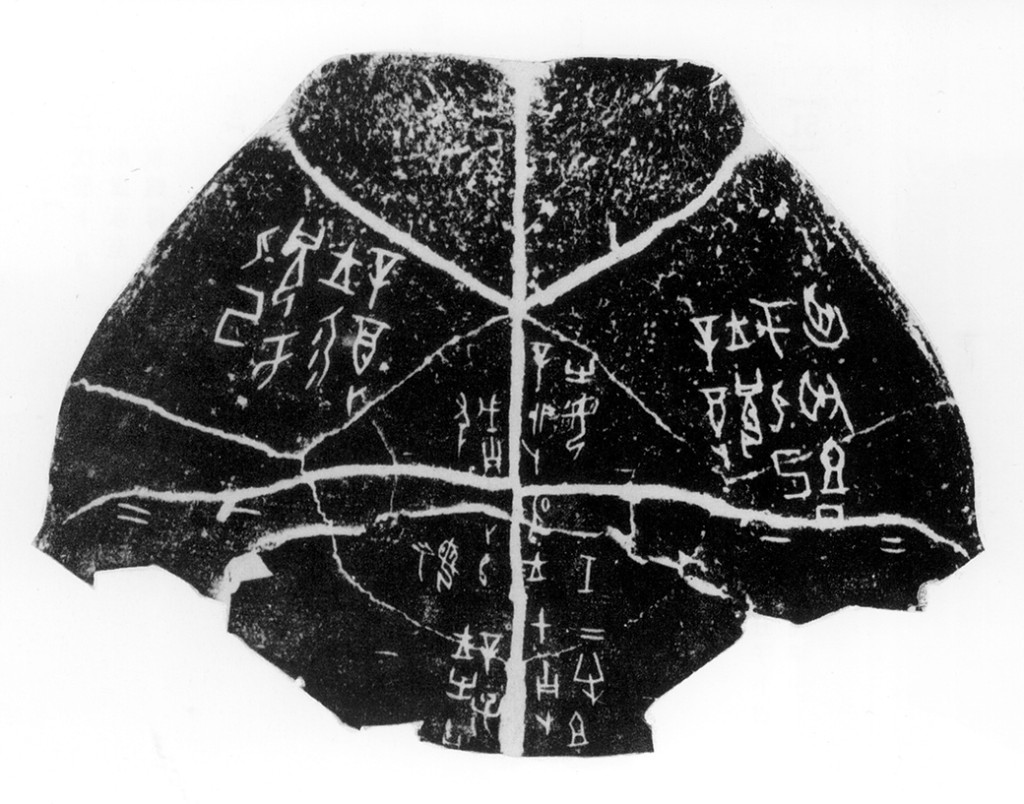
Oracle script engraved on a turtle shell. Matsumaru Michio: Oracle script and Bronze script. [松丸道雄: 甲骨文・金文. 中国法書選1] Nigen-sha, Tokyo 2012. P. 20.
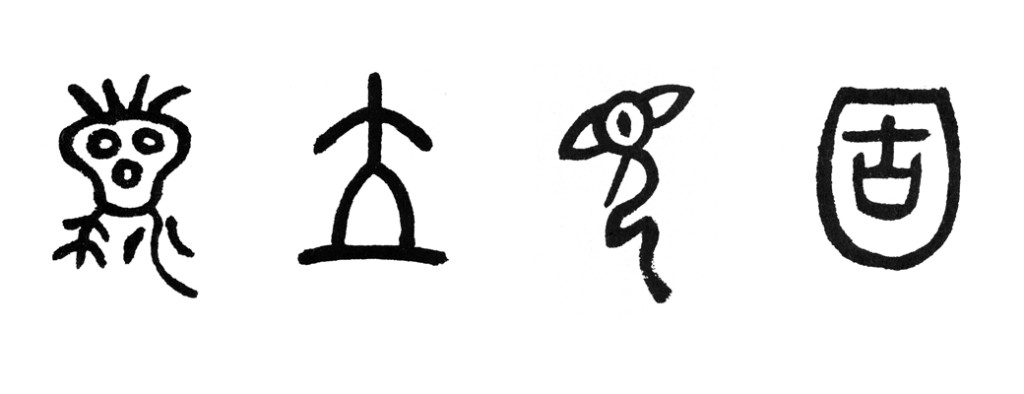
The character from left to right stand for: dragon (龍), to stand (立), to see/to look (見), hard/solid (固). Single characters in the Oracle script from the book: 夢晨: 鄧石如篆書 陰符經.張子西銘. 中國和平出版社 1999.
Alongside my lessons, I also started to study the history and theory of the oracle script, and through my reading, I came to appreciate the enormous cultural effort of turning language into writing, and the fundamental role of the Oracle script in this process.
Friday morning became my time with calligraphy. I spent one year with the Oracle script, then moved on to the Clerical script and very recently, to the Kaishu. For the past six months, I have been learning with local students from Hong Kong at the studio of Mr. Lui.
Yet, I continue to read and study about the Oracle script. Within it, I see a key to an evolution – from a system of signs, to a writing system.
